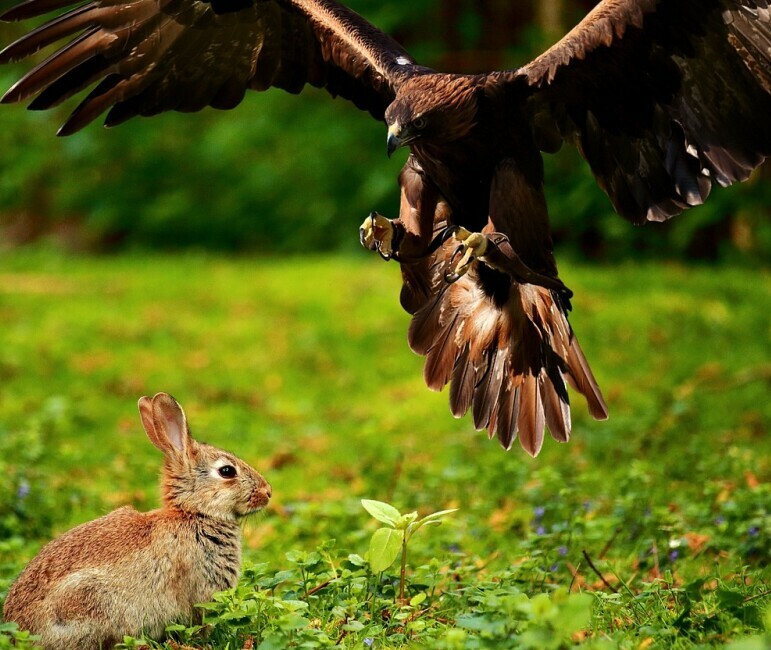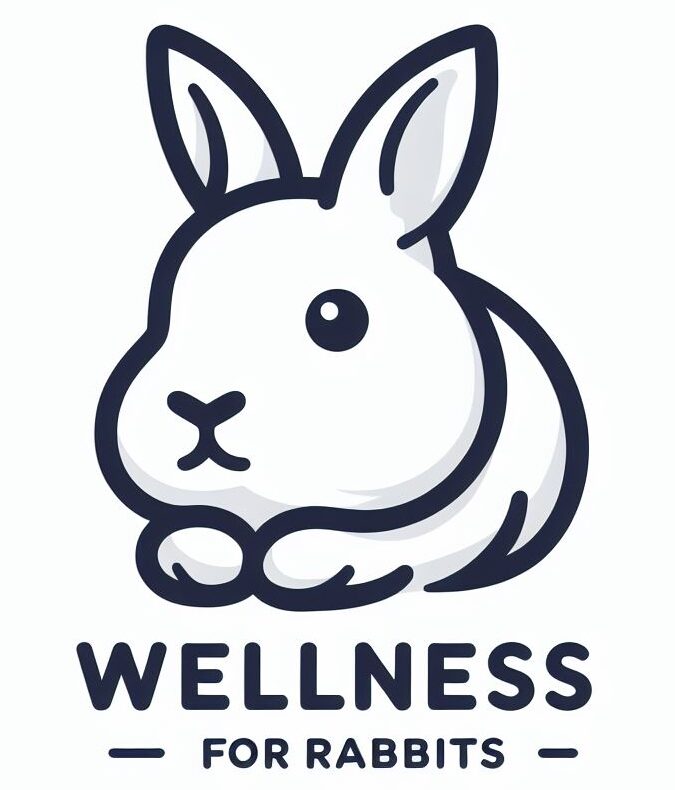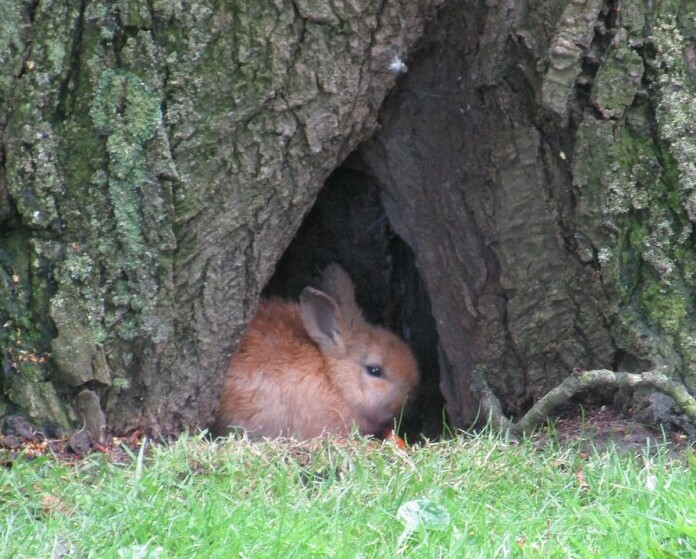It can seem like your rabbit is avoiding you when they tend to choose a hiding spot rather than cuddle with you. Truth is, rabbits love privacy and they have a very strong instinct to hide! The role of hideouts and shelters in a rabbits housing is essential for their sense of safety. Don’t be discouraged by this, instead encourage it and they will view you as a safety provider!
Understanding Rabbit Behavior and the Need for Hideouts
Rabbits have a strong instinct to hide mainly because of survival methods in the wild. The main reason for this instinct is that rabbits are prey animals, meaning they are often hunted by various predators such as foxes, birds of prey, and even humans. Hiding helps them avoid being detected and captured. When not in hiding, rabbits are constantly “looking over their back” in case of possible danger.

This hiding instinct leads rabbits to dig burrows or use existing ones as shelters. These burrows provide a safe space to hide from predators, harsh weather, protect their young, and other threats. Even though our pet rabbits are domestic, they still have these same instincts and will try to dig to create a burrow, even if the floor is carpet instead of dirt. This is why it is especially important to provide a place for your rabbit to hide, even if there are no direct threats in their housing.
Providing hideouts for pet rabbits offers several psychological benefits that can significantly enhance their well-being:
- Stress Reduction: Hideouts give rabbits a safe space to retreat when they feel threatened or overwhelmed. This can significantly reduce their stress levels, helping them remain calm and relaxed.
- Security and Comfort: Having a designated hideout can make rabbits feel more secure in their home. This sense of security is crucial for their overall mental health, as rabbits are naturally anxious animals.
- Natural Behavior Expression: Hideouts allow rabbits to engage in their natural behaviors, such as burrowing and nesting. This opportunity to express instinctive behaviors is essential for their psychological well-being.
- Prevention of Aggression: Providing a hideout can help reduce aggression and territorial behavior in rabbits, especially if they share their living space with other rabbits. A personal space where they can retreat to can prevent conflicts and promote harmonious living.
- Improved Bonding with Humans: When rabbits feel secure, they are more likely to be sociable and form stronger bonds with their human caregivers. Hideouts can help foster a trusting relationship by providing a space where rabbits can feel safe and secure.
- Mental Stimulation: Hideouts can be enriched with toys, hay, and other items to explore, which can provide mental stimulation. This keeps rabbits engaged and prevents boredom, which is crucial for their psychological health.
Overall, hideouts are an essential component of a rabbit’s habitat, providing psychological benefits that contribute to their overall happiness and health.
Designing Rabbit Hideouts for Safety and Comfort
It is very well known that rabbits need hiding spaces, so because of this there are a lot of great options out there to purchase! However, you can also build your own if you want to customize it a little more. If you decide to make your own, it’s important to use materials that are safe, comfortable, and durable. Here are some of the best materials:
- Wood
Specifically untreated pine or aspenwood. You can use regular plywood but make sure it is free from any toxic adhesives or finishes. Wood is a great option because it is sturdy and safe for rabbits to chew on if they like. To make a wooden hideout simply construct a wooden box with an entry hole. Sand down any rough edges to prevent splinters. You can always add more onto it such as another “floor” or little windows if you are handy! If you would prefer to buy one online this wooden hiding house is a great option with a little hammock and great privacy!
- Carboard
Cardboard is easily accessible and safe for rabbits to chew on. Although not as durable as wood, it is still a great option and super easy to make from home! Simply cut entry and exit holes in a cardboard box. Its inexpensive and can be easily replaced if chewed or soiled. My rabbit Leo’s favorite material to chew is carboard so he is a big fan of this one!
- Fabric
Fleece or cotton is great for creating soft, cozy hideouts like tents or tunnels. Just make sure the fabric is free from loose threads that could be ingested. You can make a small tent using a wooden or plastic frame covered with fleece or cotton fabric. This one takes a little bit more craftmanship so another option would be to purchase online.
- Hay or Straw
Hay is a great material to create a natural, cozy, hideout that also doubles as a snack! Rabbits obviously love hay and it is the most similar to a burrow in the wild which provides an extra element of comfort. Honestly, I have never attempted to create a hay hideout because I am not skilled in weaving. However, there are great hay hideouts online!
It is important to consider your specific rabbit when designing or picking a hideout. You want to make sure it is big enough for your rabbit to do a full circle in. That is the minimum but you can make it as big as you’d like! The hideouts I have linked are big enough for the average rabbit so you don’t have to worry about that. Also, pay attention to the materials your rabbit is drawn to and pick your hideout based on what they like. Rabbits all have different personalities and preferences so if you have multiple rabbits they may not all like the same kinds. You can also put little toys or hay inside for them to enjoy!
Integrating Hideouts Within the Larger Rabbit Housing Setup
Location is key when it comes to the placement of hideouts. For example, if you were to place it in the middle of a room, that wouldn’t seem like a good place to hide because a predator could easily spot it. However, if you were to put it in a more discrete location your rabbit would be much more likely to use it and feel safe. Some strategies for positioning hideouts in the housing area are:
- Corner Placement: Place a hideout in a corner of the enclosure to provide a secure retreat with walls on two sides.
- Under Platform: If you have a multi-level enclosure, place hideouts under platforms or ramps to utilize vertical space effectively.
- Mixed Environment: Combine different types of hideouts (e.g. wood, fabric, carboard, hay) and place them strategically throughout the enclosure to cater to different preferences.
By thoughtfully positioning hideouts, you can create an environment that supports the instincts of your rabbits, making them feel safe, secure, and comfortable in their enclosure.
Advance and Adapt: Evolving Hideouts With Your Rabbit’s Lifecycle
While good-quality hideouts can last a long time, it is good to know when to upgrade or replace them. Once rabbits reach adult age (2-4 years old) they pretty much stop growing. However, if your rabbit is young when you first get the hideout you may need to upgrade as they grow. As your rabbit reaches senior age you may need to adjust your hideouts to be more easily accessible. If you had it placed on top of an object you may need to lower it for example.
Rabbit behavior can change and affect shelter needs. If you notice more aggressive behavior such as biting, lunging, or hitting you should add more hideouts in different spaces to ensure they aren’t feeling the need to be territorial. if you notice your rabbit hiding from you or running away from you, incorporating more hideout options in quiet/calmer areas can help to relax your rabbit. Another example would be if you notice your rabbit is displaying destructive behavior such as chewing or digging your items, incorporating more interactive hideouts such as tunnels or toys will help with enrichment/stimulation.
It is always beneficial to regularly observe your rabbits and adjust their shelter as needed based on their behavior and preferences. Providing a dynamic and responsive environment will help ensure your rabbits remain healthy, happy, and well-adjusted.
If you have any questions or comments please leave them below and I will be happy to get back to you 🙂

